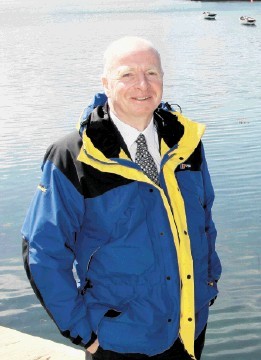
Proposals by Ofgem to improve the transmission charging regime have been labelled a “a wasted opportunity”.
After a series of consultations and work with the industry, Ofgem has proposed retaining the locational charging system but suggests updating it with a new element taking into account types of generator and how much they use the network to transmit power.
The idea is that those who use the grid less would pay less. Ofgem now wants the industry and National Grid to work out how the proposals would work, including looking at power from the islands and HVDC converter stations – and who should fund them.
Niall Stuart, chief executive of trade body Scottish Renewables, said: “Ofgem has ruled out the socialised charging option (making payments for everyone the same), which is what we expected.
“This option does leave the door open to bring down prices to make projects economic but there are still a lot of questions to be answered, how it would work in practice.”
There is also concern that the panel, now set to look closer at the proposal, contains generators who would not want the current system changed.
Edinburgh wave technology developer Aquamarine Power estimated under the locational charging it would cost the firm £3.5million a year to transmit power from its proposed 40MW project off the island of Lewis.
In comparison, under the same regime, it would cost a project the same size in southern England just £40,000 a year.
Neil Kermode, managing director of the European Marine Energy Centre on Orkney, said Ofgem’s proposal was a “long-anticipated disappointment”.
“This seems to be another example of a failure to drive real change. The proposed approach is a slight improvement, but cannot in any sense be regarded as showing the determination or leadership the country needs to build a sustainable energy system.”
The existing system was based on charging power generators more the further they are away from demand centres in a bid to encourage power stations to be built close to demand – a policy now deemed out of date as the move to renewables is seeing most potential power generation located in remote areas.
Ofgem’s announcement said: “The aim of the changes is to facilitate Britain’s transition to a low carbon energy sector at the lowest cost to consumers.”
Ofgem said it now wanted industry to progress the proposals and for National Grid to look at how they could be implemented taking into account different types of power generators, links to Scottish islands currently being considered and proposed offshore HVDC links.
Grid Update
Outside of the issues over transmission charging, a number of grid upgrades have been announced in the past year.
Ofgem recently announced plans to fast track plans by SHTL (Scottish Hydro Electric Transmission) and SP Transmission (SPTL) for two high voltage transmission lines either side of the UK running from Scotland to England – dubbed the bootstraps.
There is also work on the Isles project, an EU-funded scheme to link transmission networks between northern and southern Ireland and the west coast of Scotland.
More locally, the go-ahead of the Viking Energy wind farm on Shetland has unlocked plans for a transmission cable between Shetland and the Scottish mainland, paving the way for renewables projects off the islands.
Progress on a European supergrid has been slow. An agreement in principle was signed between European nations to develop a supergrid, which would mean power from renewable developments could flow between countries depending on where the need was.
A more ambitious scheme being promoted is the “SuperSmart Grid”, backed by climate change research groups. It would link European renewables networks with giant solar farms in North Africa.
Small steps have been made towards the supergrid. A plan for an interconnector between Scotland and Norway was granted £570,000 of European funding for a preliminary study in March.
